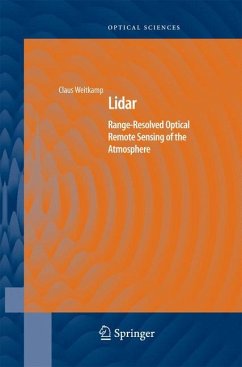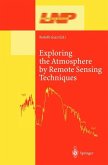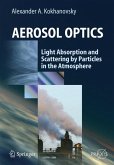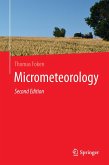Written by leading experts in optical radar, or lidar, this book brings all the recent practices up-to-date and covers a multitude of applications, from atmospheric sciences to environmental protection. Its broad cross-disciplinary scope should appeal to both the experienced scientist and the novice in the field. The Foreword is by one of the early pioneers in the area, Herbert Walther.
Soon after the laser was invented it became obvious that this new inst- ment, providingvisibleandinfraredradiationwithhighintensitydensity and small divergence, would be a great tool for remote monitoring of atmospheric properties by radar-like methods. The lidar method (li for light instead of ra for radio) is thus practically as old as the laser itself. In the beginning, measurements using light scattering of aerosols and dust particles were at the focus of attention, e.g., for investigating v- ibility or cloud heights. As lasers became more intense, and systems for detecting backscattered light more sensitive, Rayleigh scattering was also studied to allow parameters such as variation of the total air pressure or clear air turbulence to be investigated. Furthermore, Raman scattering allowed limited selective detection of gas constituents of the atmosphere. Increasing sophistication of laser systems made it possible tostudytraceconstituentsoftheatmosphere; thiswasthecaseassoonasfrequency-tunablelasersystems, eitherline-tunableorcontinuouslyt- able, became available. This made selective absorption and ?uorescence accessible for detecting trace constituents with a sensitivity suf?ciently high to be useful. Improved methods such as the differential absorption method were alsoinventedandusedtomonitortraceconstituentsoverlargedistances.
Soon after the laser was invented it became obvious that this new inst- ment, providingvisibleandinfraredradiationwithhighintensitydensity and small divergence, would be a great tool for remote monitoring of atmospheric properties by radar-like methods. The lidar method (li for light instead of ra for radio) is thus practically as old as the laser itself. In the beginning, measurements using light scattering of aerosols and dust particles were at the focus of attention, e.g., for investigating v- ibility or cloud heights. As lasers became more intense, and systems for detecting backscattered light more sensitive, Rayleigh scattering was also studied to allow parameters such as variation of the total air pressure or clear air turbulence to be investigated. Furthermore, Raman scattering allowed limited selective detection of gas constituents of the atmosphere. Increasing sophistication of laser systems made it possible tostudytraceconstituentsoftheatmosphere; thiswasthecaseassoonasfrequency-tunablelasersystems, eitherline-tunableorcontinuouslyt- able, became available. This made selective absorption and ?uorescence accessible for detecting trace constituents with a sensitivity suf?ciently high to be useful. Improved methods such as the differential absorption method were alsoinventedandusedtomonitortraceconstituentsoverlargedistances.
From the reviews:
"This book covers, for each of the major variants of the lidar technique, the underlying physics - how it works, its mathematics - what the relevant equations look like, the basic layout of an instrument, and examples of atmospheric properties ... . Some of the chapters contain original material that cannot be found in books or archival journals, but is presented here for the first time. ... The broad cross-interdisciplinary scope should appeal to scientists ranging from the view of optical sciences to environmental engineers." (Jürgen Pappel, Optik, Vol. 117 (7), 2006)
"This book has each chapter written by a different expert in the field. This has the advantage of having some of the best expertise available ... . the book supplies a comprehensive view of all the important techniques and applications now used ... . covers the physics and mathematics of the interaction, instrumentation and examples of applications with field results.... succeeds in highlighting the extensive uses of lidar in the remote sounding of the atmosphere and its exciting future possibilities." (C.M.R. Platt, Australian Physics, Vol. 42 (6), 2006)
"The book ... covering the basic theory and current practice of lidar in a consistent and fairly uniform style. It should be very useful to readers who, like me, have some knowledge of the basics of lidar and some of the standard techniques ... . This book provides clear, up-to-date accounts of current work on remote sensing of the atmosphere with lasers. I enjoyed reading it and ... will be especially useful for newcomers to the field." (Peter W. Milonni, Contemporary Physics, Vol. 50 (5), September-October, 2009)
"This book covers, for each of the major variants of the lidar technique, the underlying physics - how it works, its mathematics - what the relevant equations look like, the basic layout of an instrument, and examples of atmospheric properties ... . Some of the chapters contain original material that cannot be found in books or archival journals, but is presented here for the first time. ... The broad cross-interdisciplinary scope should appeal to scientists ranging from the view of optical sciences to environmental engineers." (Jürgen Pappel, Optik, Vol. 117 (7), 2006)
"This book has each chapter written by a different expert in the field. This has the advantage of having some of the best expertise available ... . the book supplies a comprehensive view of all the important techniques and applications now used ... . covers the physics and mathematics of the interaction, instrumentation and examples of applications with field results.... succeeds in highlighting the extensive uses of lidar in the remote sounding of the atmosphere and its exciting future possibilities." (C.M.R. Platt, Australian Physics, Vol. 42 (6), 2006)
"The book ... covering the basic theory and current practice of lidar in a consistent and fairly uniform style. It should be very useful to readers who, like me, have some knowledge of the basics of lidar and some of the standard techniques ... . This book provides clear, up-to-date accounts of current work on remote sensing of the atmosphere with lasers. I enjoyed reading it and ... will be especially useful for newcomers to the field." (Peter W. Milonni, Contemporary Physics, Vol. 50 (5), September-October, 2009)








